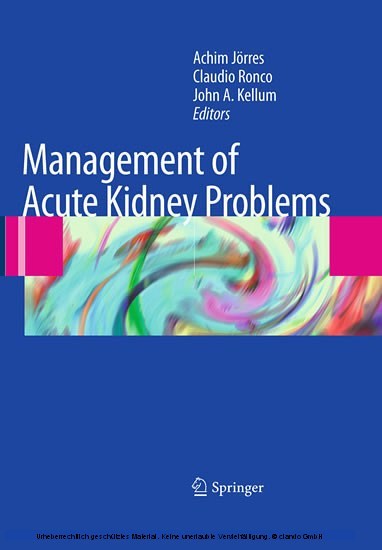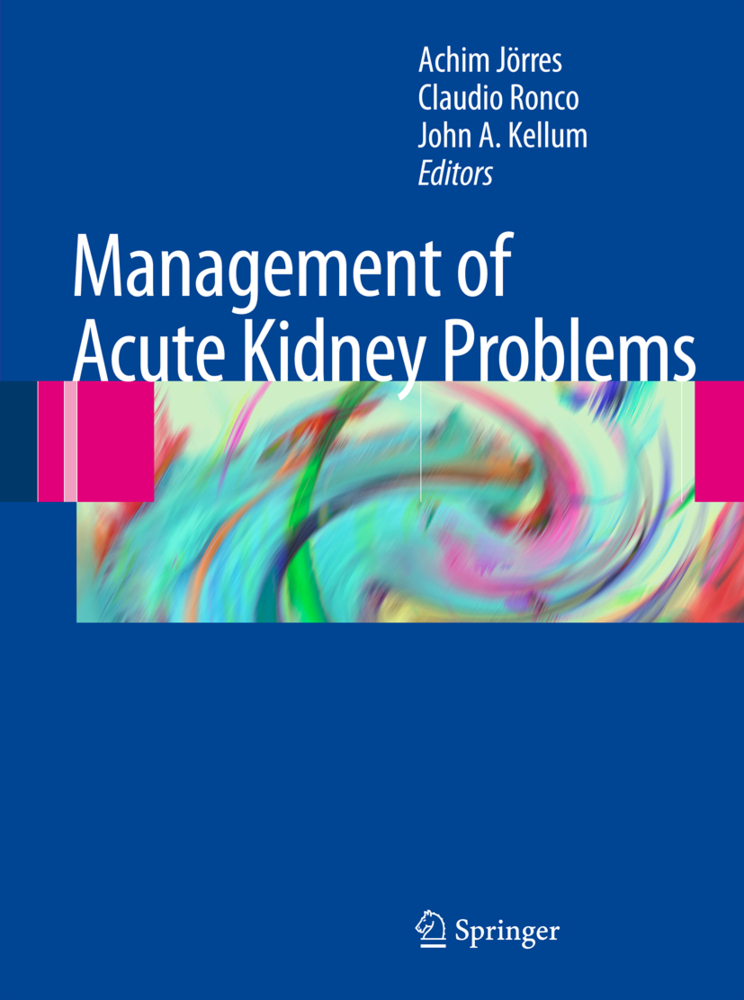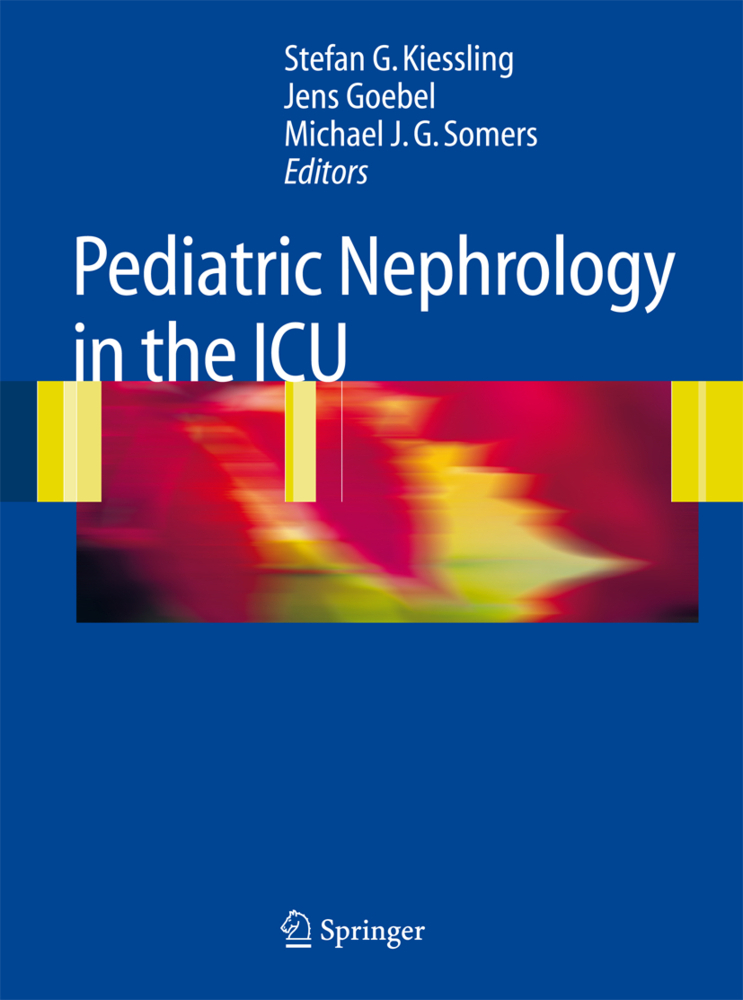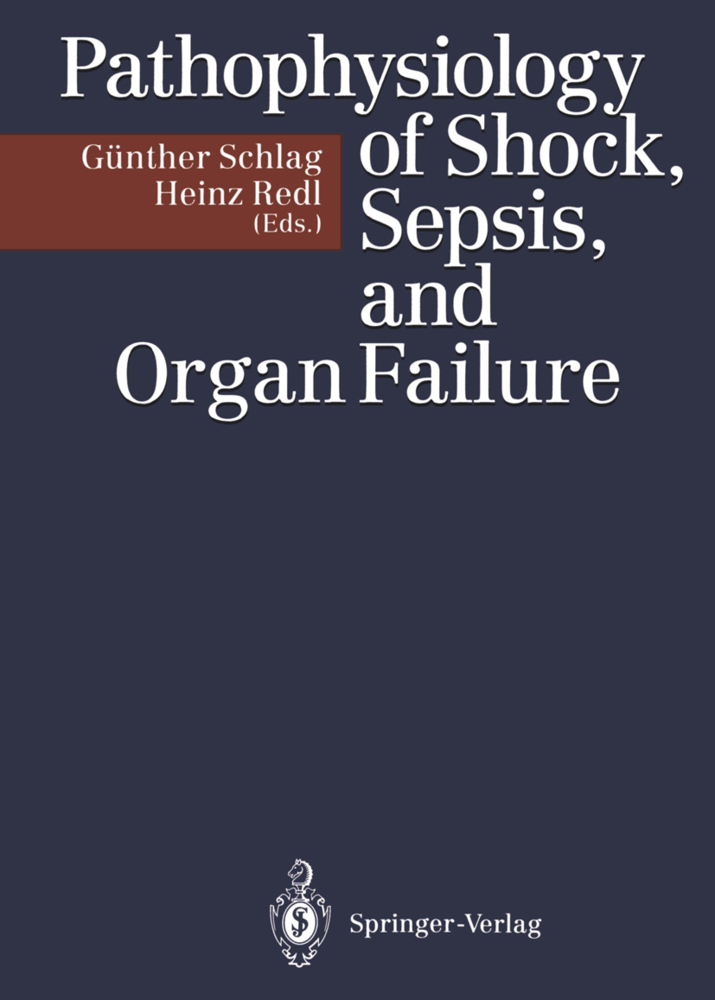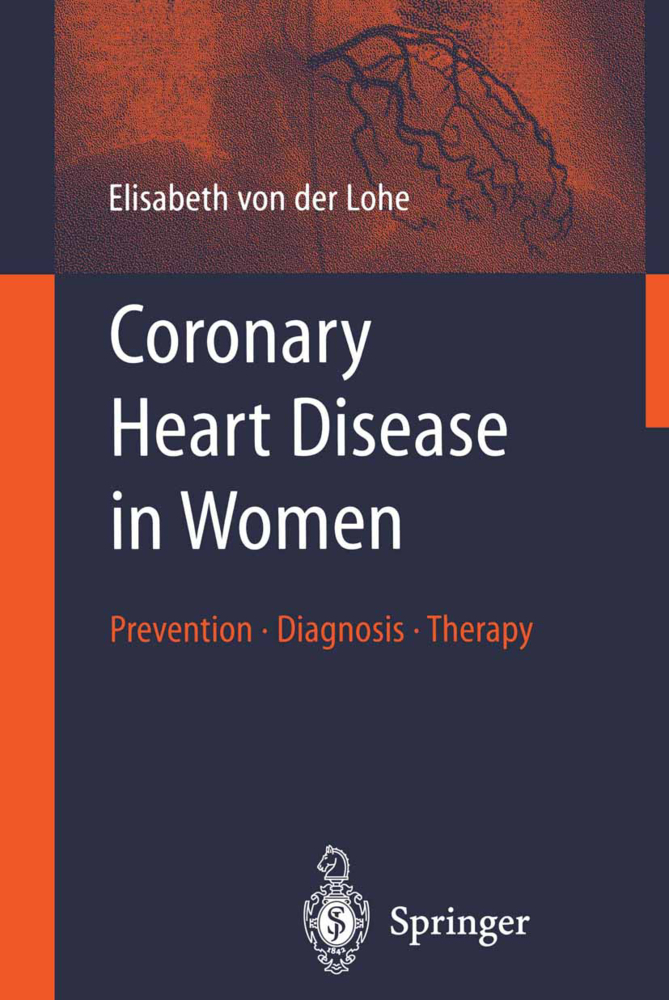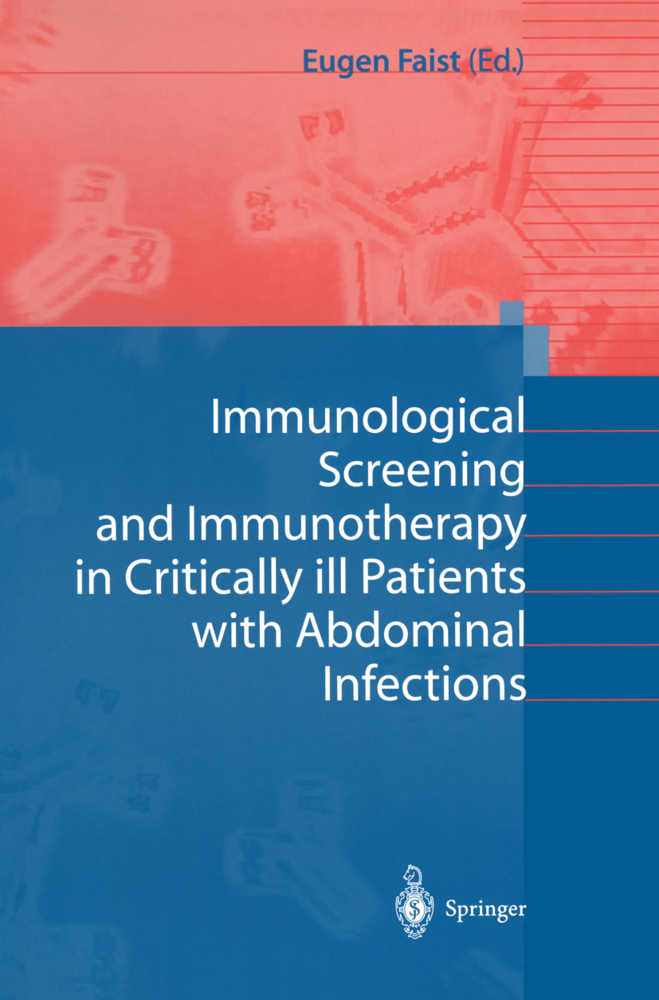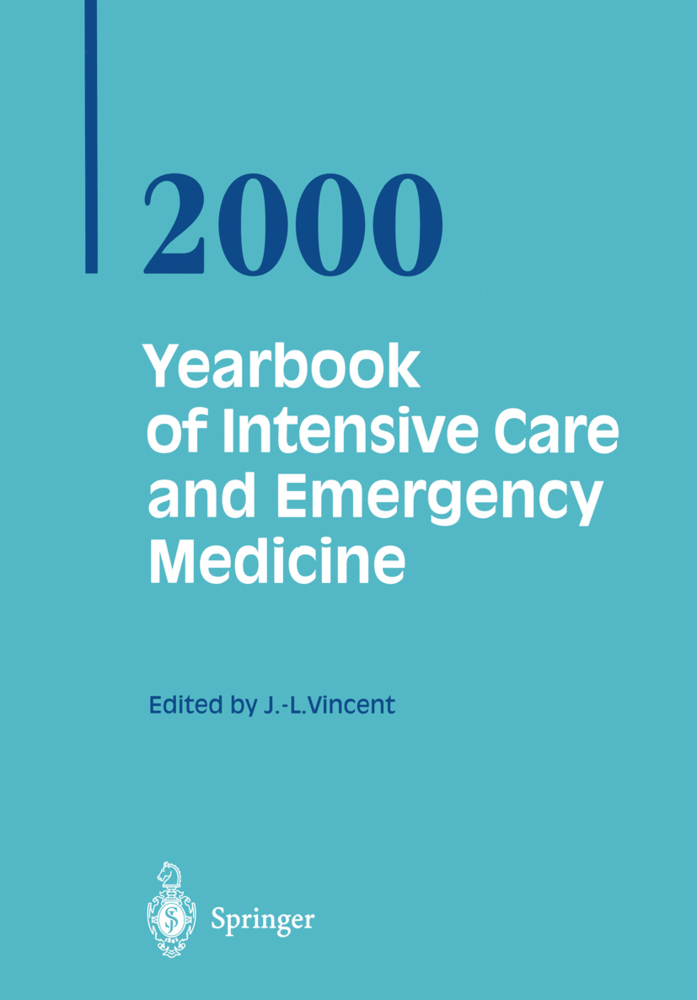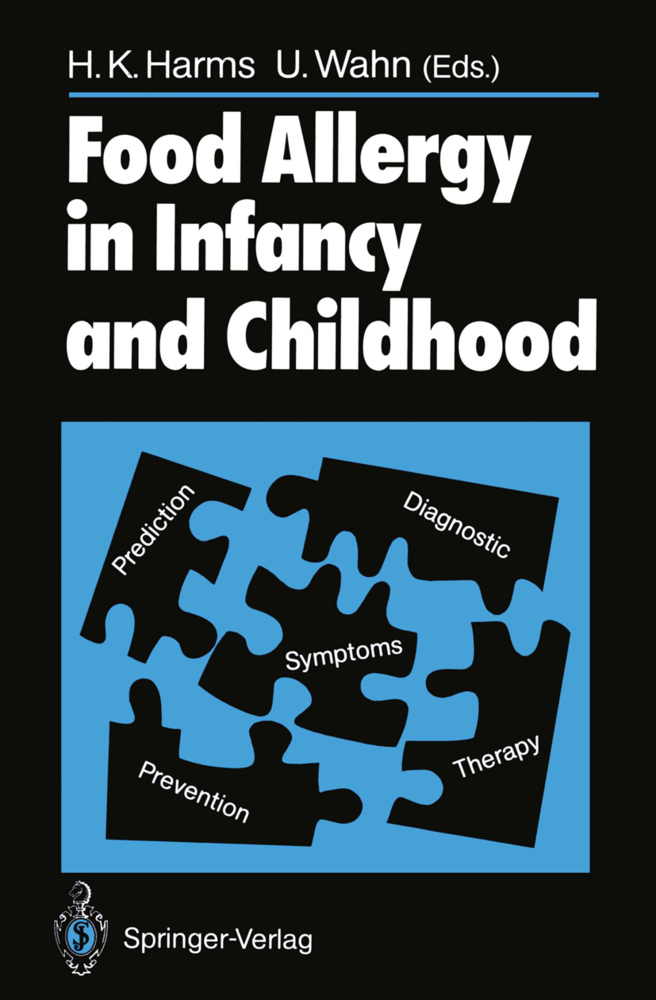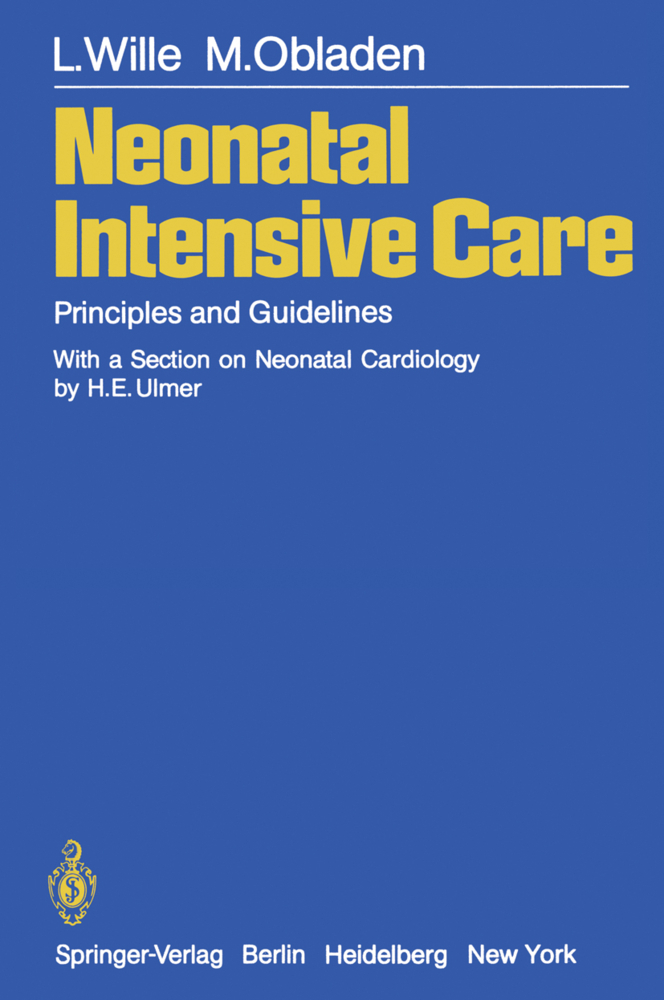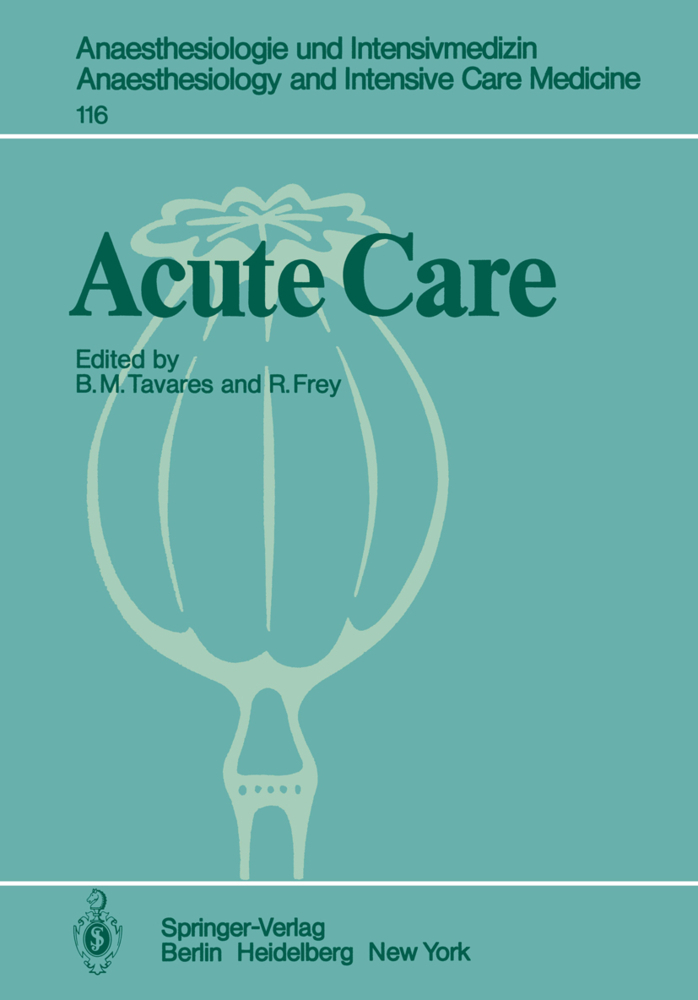Acute kidney failure is an important clinical area in the intensive care unit setting. An estimated 5-20% of critically ill patients experience an episode of acute kidney failure during the course of their illness, and about 5% of patients admitted to an ICU will eventually require renal replacement therapy. In these patients, in-hospital mortality is extremely high, exceeding 50%. Thus, the early detection and causal treatment of acute kidney problems is vitally important for a successful outcome. Written by internationally renowned experts, this clinical reference offers helpful advice with the most recent information on the definition, epidemiology, pathophysiology, and clinical causes of acute kidney failure as a fundamental prerequisite for prevention of this disorder. Moreover, it also covers differential diagnostic approaches for patients with acute renal failure and provides a detailed outline of important measures for their clinical management. Finally, separate chapters are dedicated to various key aspects related to the adequate delivery of acute renal replacement therapy. It is intended as a helpful guide for all clinicians involved in the care of patients at risk of developing acute kidney problems.
1;Preface;6 2;Contents;8 3;Contributors;25 4;Definition and Classificationof Acute Kidney Failure;34 4.1;Definition and Classification of Acute Kidney Injury;35 4.1.1;Core Messages;35 4.1.2;1.1.1 Introduction;35 4.1.3;1.1.2 What Is Acute Kidney Injury? Current Controversies;35 4.1.4;1.1.3 Renal "Failure" or Renal "Success";36 4.1.5;1.1.4 Oliguria and Anuria;36 4.1.6;1.1.5 Prerenal Azotemia and Acute Tubular Necrosis;36 4.1.7;1.1.6 Limitations of Biomarkers;37 4.1.8;1.1.7 Renal Failure Defined by RIFLE Criteria;37 4.1.9;1.1.8 The Concept of Acute Kidney Injury: A Paradigm Shift;38 4.1.10;1.1.9 Validation Studies Using RIFLE;38 4.1.11;1.1.10 Conceptual Development and Future Directions;40 4.1.12;1.1.11 Conclusions;40 4.2;References;40 5;Overview of Pathophysiology,Etiology and Epidemiology;42 5.1;Mechanisms of Acute Kidney Injury and Repair;43 5.1.1;Core Messages;43 5.1.2;2.1.1 Introduction;43 5.1.3;2.1.2 Injury;44 5.1.4;2.1.3 Inflammation;45 5.1.5;2.1.4 Paracrine Effects of Bone Marrow-Derived Stem Cells;47 5.1.6;2.1.5 Other Mechanisms to Limit or Stop Inflammation;47 5.1.7;2.1.6 Repair;48 5.1.8;2.1.7 Conclusions;48 5.2;References;49 5.3;Uremic Toxins;51 5.3.1;Core Messages;51 5.3.2;2.2.1 Introduction;51 5.3.3;2.2.2 Interfering Factors Due to Renal Replacement Therapy;51 5.3.4;2.2.3 Biochemical Alterations;52 5.3.4.1;2.2.3.1 Enzymatic Processes;52 5.3.4.2;2.2.3.2 Drug Protein Binding;53 5.3.5;2.2.4 Factors Responsible for the Uremic Syndrome;53 5.3.6;2.2.5 Major Low-Molecular-Weight Uremic Retention Products;54 5.3.6.1;2.2.5.1 Advanced Glycosylation End Products;54 5.3.6.2;2.2.5.2 Creatinine;55 5.3.6.3;2.2.5.3 Dimethylarginine;55 5.3.6.4;2.2.5.4 Guanidines;55 5.3.6.5;2.2.5.5 Hippuric Acid;56 5.3.6.6;2.2.5.6 Homocysteine;56 5.3.6.7;2.2.5.7 Indoxyl Sulphate;56 5.3.6.8;2.2.5.8 Phosphate;56 5.3.6.9;2.2.5.9 Purines;56 5.3.6.10;2.2.5.10 Urea;56 5.3.7;2.2.6 Middle Molecules;57 5.3.8;2.2.7 Factors Influencing Plasma Concentration of Uremic Solutes;58 5.3.9;2.2.8 Conclusions and Therapeutic Implications;58 5.4;References;58 5.5;Prerenal Acute Kidney Failure;62 5.5.1;Core Messages;62 5.5.2;2.3.1 Introduction;62 5.5.3;2.3.2 Pathophysiology;63 5.5.4;2.3.3 Causes of Prerenal Acute Kidney Failure;63 5.5.5;2.3.4 Diagnosis of Prerenal Acute Kidney Injury;64 5.5.6;2.3.5 Epidemiology of Prerenal Acute Kidney Failure;64 5.6;References;65 5.7;Intrinsic Acute Kidney Injury;67 5.7.1;Core MessagesAcute kidney injury (AKI) in the intensive care unit (ICU) can be the result of a wide range of disease proces;67 5.7.2;2.4.1 Epidemiology of AKI in the ICU Focusing on Non-ATN Etiologies;68 5.7.3;2.4.2 Clinical Evaluation of the Critically Ill Patient with AKI;69 5.7.3.1;2.4.2.1 Acute Prerenal Kidney Injury;69 5.7.3.2;2.4.2.2 Intrinsic Intrarenal Acute Failure;70 5.7.3.2.1;2.4.2.2.1 History and Record Review;71 5.7.3.2.2;2.4.2.2.2 Physical Examination;71 5.7.3.2.2.1;Monitoring of Intra-abdominal Pressure;72 5.7.3.2.3;2.4.2.2.3 Laboratory Tests;72 5.7.3.2.3.1;Urine Volume;72 5.7.3.2.3.2;Urine Dipstick and Microscopic Examination;73 5.7.3.2.3.3;Urinary Indices;73 5.7.3.2.3.4;Serum Creatinine;74 5.7.3.2.3.5;Serum Cystatin C;75 5.7.3.2.3.6;Biomarkers;75 5.7.3.2.4;2.4.2.2.4 Other Laboratory Tests to Establish the Cause of AKI;75 5.7.3.3;2.4.2.2 Imaging Procedures in the Patient with AKI;76 5.7.3.3.1;2.4.2.2.1 Ultrasound;76 5.7.3.3.2;2.4.2.2.2 Renal Doppler Ultrasonography;77 5.7.3.3.3;2.4.2.2.3 Other Radiologic Investigations;77 5.7.3.3.4;2.4.2.2.4 Renal Biopsy;78 5.7.4;2.4.3 Summary of General Therapeutic Principles of AKI in the ICU;78 5.8;References;79 5.9;Urinary Tract Obstruction;80 5.9.1;Core Messages;80 5.9.2;2.5.1 Introduction;80 5.9.3;2.5.2 Causes of Obstruction;81 5.9.4;2.5.3 Renal Damage Induced by Urinary Tract Obstructions;83 5.9.5;2.5.4 Clinical Signs;84 5.9.6;2.5.5 Diagnostic Approach;85 5.9.7;2.5.6 Instrumental Diagnostics;85 5.9.8;2.5.7 Radiologic Investigations;86 5.9.9;2.5.8 Renal Function After the Removal of an Obstruction;87 5.9.10;2.5.9 Tr
Jörres, Achim
Ronco, Claudio
Kellum, John A.
| ISBN | 9783540694410 |
|---|---|
| Artikelnummer | 9783540694410 |
| Medientyp | E-Book - PDF |
| Auflage | 2. Aufl. |
| Copyrightjahr | 2010 |
| Verlag | Springer-Verlag |
| Umfang | 678 Seiten |
| Sprache | Englisch |
| Kopierschutz | Digitales Wasserzeichen |

